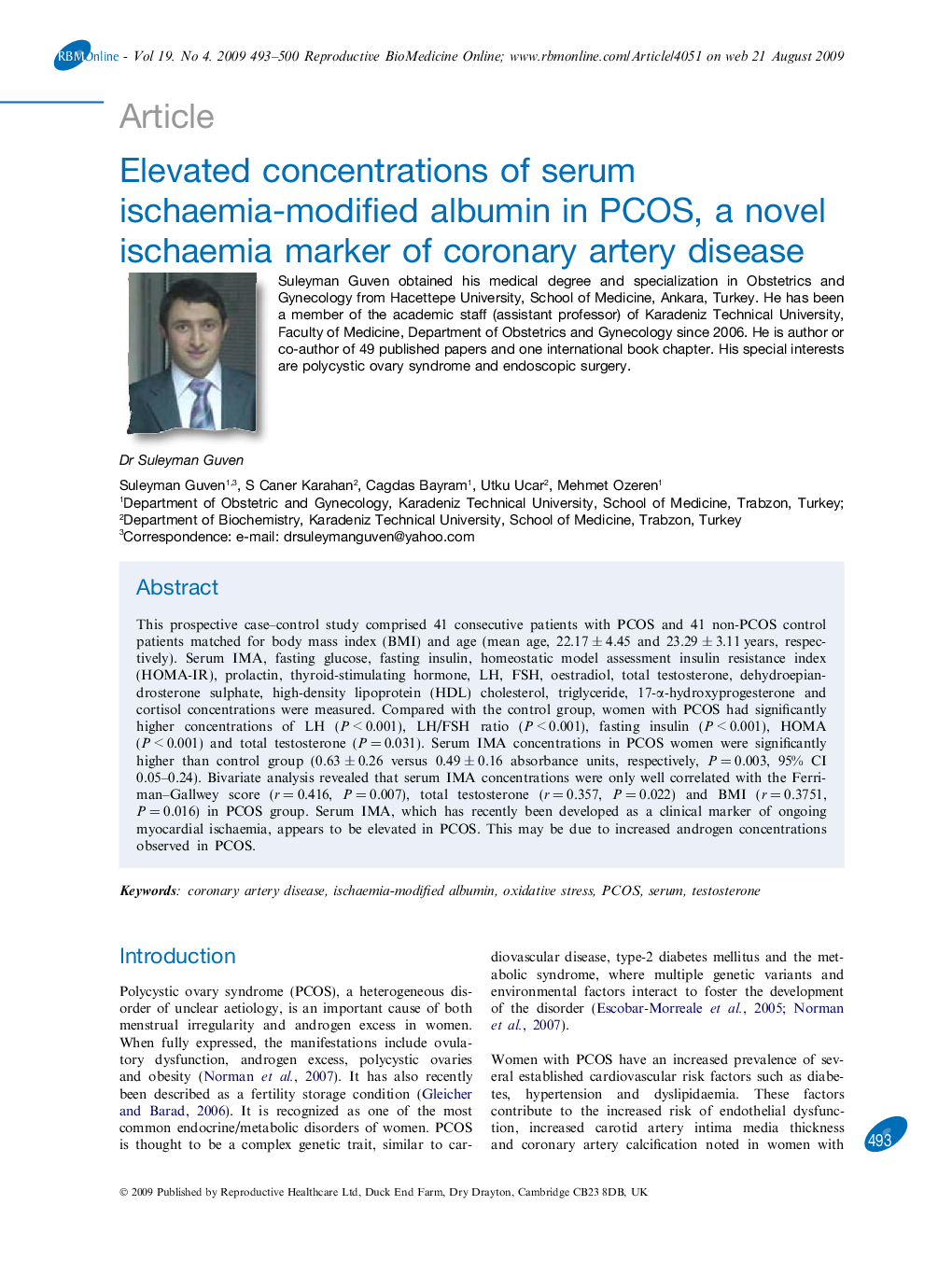| Article ID | Journal | Published Year | Pages | File Type |
|---|---|---|---|---|
| 3972172 | Reproductive BioMedicine Online | 2009 | 8 Pages |
This prospective case–control study comprised 41 consecutive patients with PCOS and 41 non-PCOS control patients matched for body mass index (BMI) and age (mean age, 22.17 ± 4.45 and 23.29 ± 3.11 years, respectively). Serum IMA, fasting glucose, fasting insulin, homeostatic model assessment insulin resistance index (HOMA-IR), prolactin, thyroid-stimulating hormone, LH, FSH, oestradiol, total testosterone, dehydroepiandrosterone sulphate, high-density lipoprotein (HDL) cholesterol, triglyceride, 17-α-hydroxyprogesterone and cortisol concentrations were measured. Compared with the control group, women with PCOS had significantly higher concentrations of LH (P < 0.001), LH/FSH ratio (P < 0.001), fasting insulin (P < 0.001), HOMA (P < 0.001) and total testosterone (P = 0.031). Serum IMA concentrations in PCOS women were significantly higher than control group (0.63 ± 0.26 versus 0.49 ± 0.16 absorbance units, respectively, P = 0.003, 95% CI 0.05–0.24). Bivariate analysis revealed that serum IMA concentrations were only well correlated with the Ferriman–Gallwey score (r = 0.416, P = 0.007), total testosterone (r = 0.357, P = 0.022) and BMI (r = 0.3751, P = 0.016) in PCOS group. Serum IMA, which has recently been developed as a clinical marker of ongoing myocardial ischaemia, appears to be elevated in PCOS. This may be due to increased androgen concentrations observed in PCOS.
